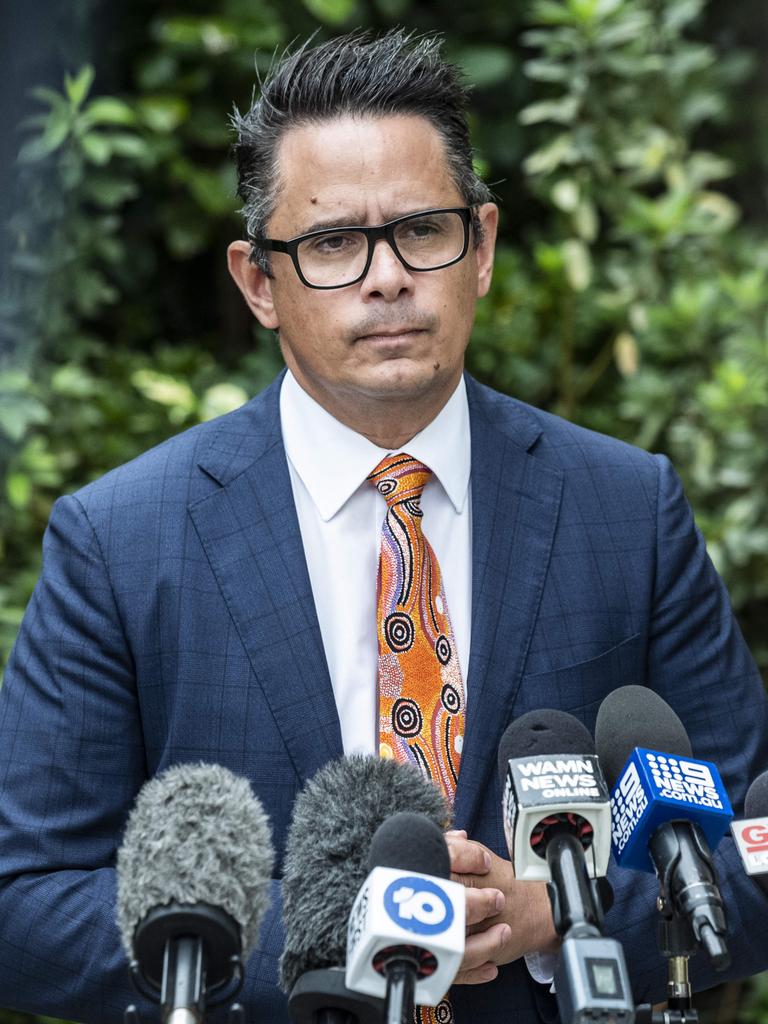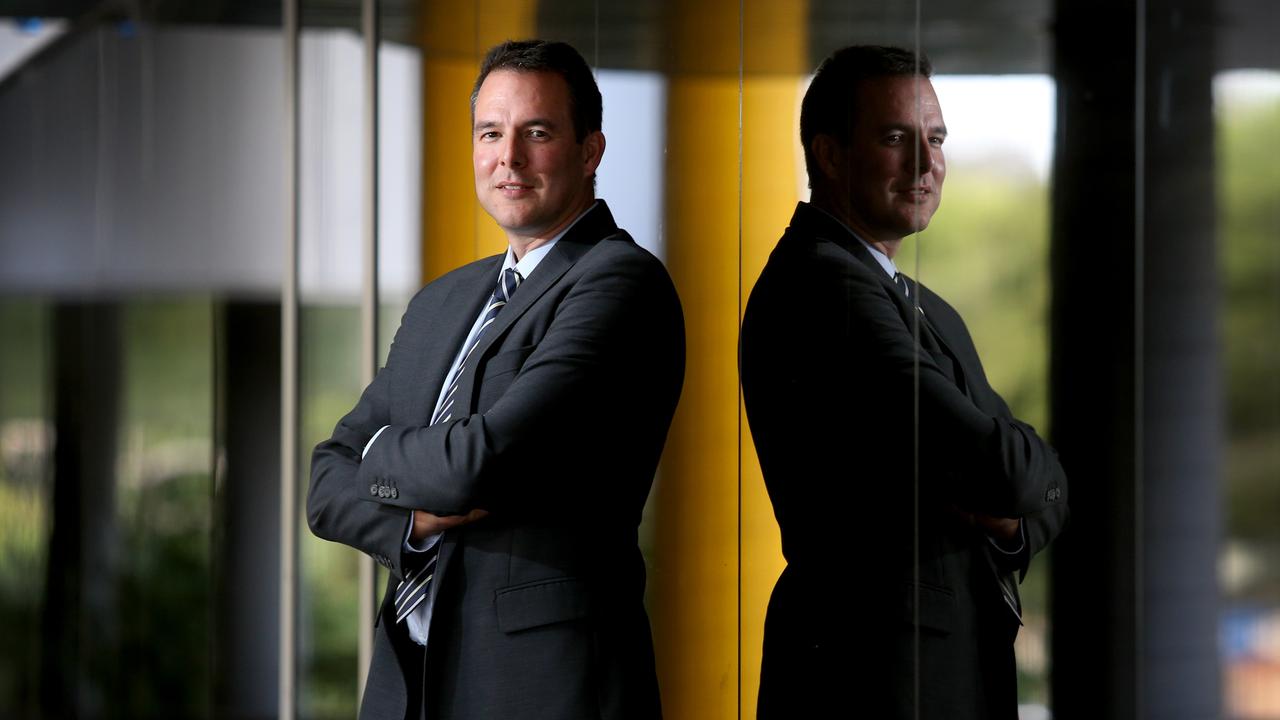Jim Chalmers lays out roadmap for more intervention
The Treasurer should take more notice of the brave new economic world that is already being built around him.
Business
Don't miss out on the headlines from Business. Followed categories will be added to My News.
Jim Chalmers’ call for a new form of values-based capitalism may make us feel good, but it is built on top of the wrong assumptions for the problems that the Treasurer is trying to solve.
Just as important is for Chalmers not to gloss over complex interaction already in place between federal and state governments, business and markets towards building a better economy. Nor should he confuse bad policymaking with poor business outcomes.
Businesses acknowledge they don’t always get it right, but the biggest players have been on the path to building a broader form of capitalism for much longer than Chalmers is prepared to give credit.
One of the big lessons for business from Covid that has also flowed through to the early months of the Albanese government is an expectation of a more assertive Canberra. Be it energy price caps or a push for multisector enterprise bargaining, Chalmers is clearly laying the groundwork for more intervention to come.
It is shallow for Chalmers, in his essay that appeared in The Monthly, to claim the model for a new economy emerged from the 2022 election. Business has been hard at work refining it for decades and Canberra has been late to the party.
Be it Liberal or Labor, what business needs most of all is certainty from successive governments. This will give business the confidence to nurture long-term investment plans within a robust legal and institutional framework, and hopefully comes with commitment from the government of the day to stay out of the way.
From former BHP boss Chip Goodyear, who set out the mining giant’s environmental, social and governance road map in 2003 – well before the term ESG was coined – to the Australian banks freezing nearly $300bn of mortgages and small business loans during the Covid years, governments need to see businesses as working hard to find their own solutions to big problems. Meanwhile, property majors Lendlease and Mirvac are committing hundreds of millions dollars into social housing because it makes for good business to partner with governments on the right terms.
Chalmers is right about the energy policy vacuum during successive Liberal governments.
But that hasn’t stopped players such as Macquarie from becoming one of the world’s biggest green energy investors with more than $45bn in funded programs.
Likewise energy majors such as AGL and Origin Energy developed their own policies about exiting their legacy coal-fired power plants and committing tens of billions of dollars in new investment – without demands from Canberra. Admittedly, AGL’s path was torturous, but that is the market at work – messy and often coming with shocks.
Many energy executives say it was the market signal given by a net zero target that was more important than anything to give a commitment to start spending.
To get an insight into how business is thinking, Chalmers and many others in Canberra should read a defining speech given late last year by Ben Wyatt, the Rio Tinto director who was the former West Australian treasurer and a one-time corporate lawyer. Wyatt is also the first Indigenous person to be appointed as a director of an ASX 200 company.

Speaking at an ASIC forum last November, Wyatt highlighted the convergence of public expectations in respect of what taxpayers demand of the government and what stakeholders – not just shareholders – now demand of corporations.
Wyatt says a social licence to operate “very much now has its own standards”.
“Those standards will continue to evolve – and sometimes that evolution will be sudden – and corporate leadership must ensure that that evolution is not unexpected,” Wyatt says in the speech.
“Combined with a world and decade in which we must expect more interventionist government, corporates, advisers and regulators will be in a state of constant predictions, reactions and change to ensure that our right to operate is not under constant threat. Or, suddenly, lost,” he says.
Lawyer Danny Gilbert, who led Woolworths’ own review into a decision (since shelved) into building a Dan Murphy’s liquor store in a suburb of Darwin, highlighted the “shifting sands of corporate purpose”.
“A challenge for companies is how they articulate their social responsibilities and accountabilities in the construct of the public interest, where the public interest cannot be left to the prevailing policy or legal settings of the day,” Gilbert writes in the review.
Wyatt also points out that Rio – which came under intense social and investor pressure following the destruction of the ancient Juukan Gorge caves in the Pilbara – had every government approval in place in respect of the explosions. At the same time, the penalties in place were clearly inadequate and more was demanded of Rio by its own investors, including an executive and board clean-out.
Chalmers, as Treasurer, knows the soaring inflation that Australia is now groaning under can be blamed on both sides of the ledger. Demand as well as supply side issues. Leading into the pandemic, the focus on interest rates was to spur maximum capacity, which set central banks on a path to slash interest rates.
The cost of money during the pandemic went to almost zero, which sparked the inflation fire. Here the scales were tilted in favour of the owners of assets away from the savers to protect the economy. A Canberra-backed call to drive wages higher without productivity gains is simply robbing the long-term wealth of the nation. A wages spiral further fuels inflation and, when the blunt force of rising interest rates hits, everyone is affected.
In calling for a renewing and restructuring of markets and economic institutions, Chalmers needs to move carefully. Deliver a sound framework, but let business and motivated investors get on with it.
Costs baked in: OZ
Copper miner OZ Minerals has highlighted how businesses are now facing a new, but critical phase of inflation: baked-in costs.
OZ Minerals CFO Warrick Ranson has warned that even as supply chain pressures have eased during the December quarter, “we don’t anticipate a major reversion in costs going forward, with suppliers likely to retain current pricing levels across a range of inputs”.
This effectively keeps the step-up in the costs OZ and other miners have experienced in place.
OZ is now facing a 60 per cent jump in its power costs as it comes off its fixed-term electricity pricing contracts.
“We don’t see a lot of inflationary relief in 2023,” says Ranson, following a quarterly update.
It may all be academic with BHP securing an agreed deal in November with OZ’s board for a sweetened $9.6bn buyout. A scheme booklet is to be sent to shareholders in March, with a shareholder meeting to be held in April. BHP seems to have picked the perfect timing for OZ, sealing its deal just before China’s economy started to regain traction
Copper prices have moved into 2023 with positive momentum, surging more than 11 per cent spurred on by China’s recovery, lower expected supply from Chile and historically low LME stocks. In total, the metal has surged 30 per cent from last year’s cyclic low.
OZ chief executive Andrew Cole says the independent expert report will make a call on the pricing but the board’s unanimous recommendation to accept the bid “didn’t come lightly”.

“It’s based on deep and careful consideration of a range of factors. They include the OZ Minerals value on a stand-alone basis and that takes into account among other things commodity price forecasts, macroeconomic outlook, operational delivery, the (West Musgrave) project and the capital cycle we’re stepping into,” Cole says. BHP will supercharge its copper exposure through OZ, as the miner seeks to capitalise on “future-facing” commodities amid a renewables transition. OZ boosted its December quarter copper production by 21 per cent, marking its record quarterly output.
Brokerage JP Morgan expects copper could hit as much as 40 per cent of BHP’s earnings by the end of this decade from 20 per cent currently.
johnstone@theaustralian.com.au
More Coverage
Originally published as Jim Chalmers lays out roadmap for more intervention








